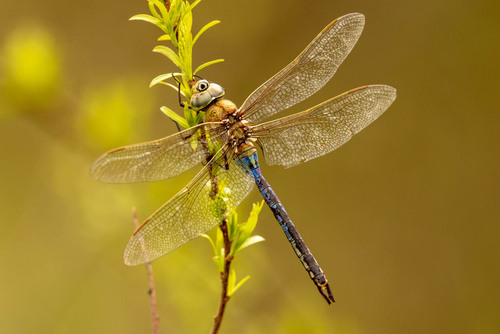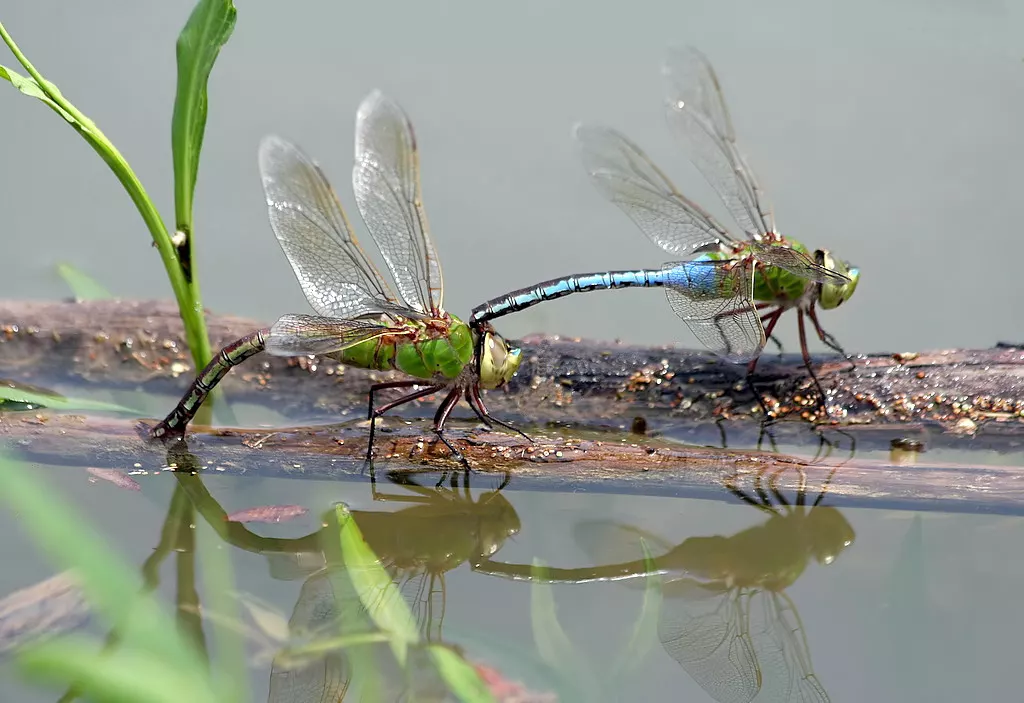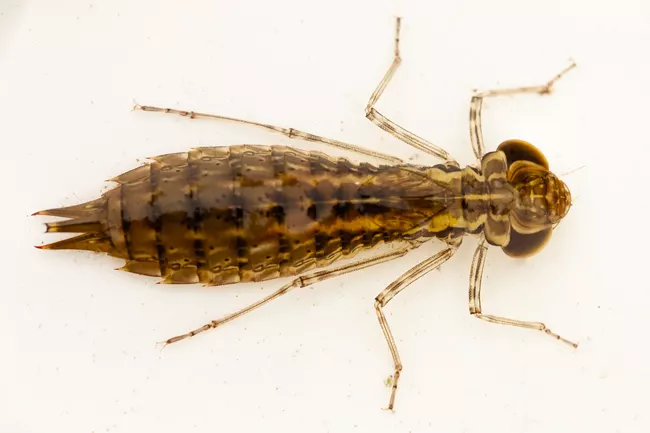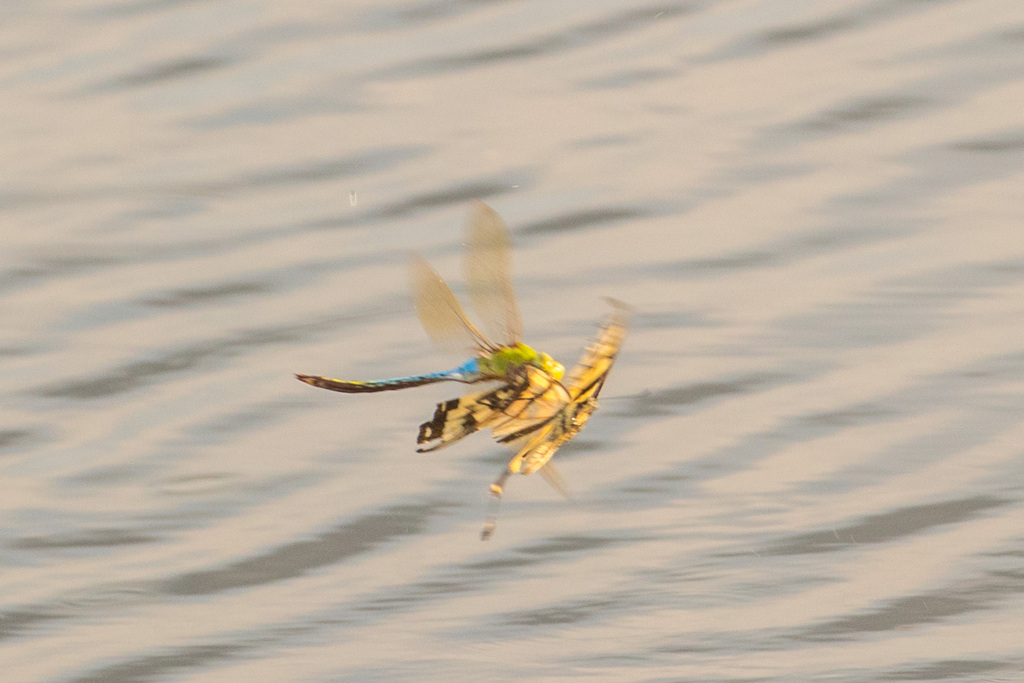
Common Green Darner
Anax junius
If you’ve been lucky enough to spend time on the Trinity River lately, you will notice a plethora of brassy-green colored dragon flies hovering above the river fervently darting to and fro. The species you are most likely viewing is the common green darner Anax junius. Common is in its name, and that is certainly the case, for this species of dragonfly is the most common and abundant throughout North America. The remainder of its common name, Darner, is given due to its resemblance to a darning needle a blunt-tipped larger needle used for repairing holes or tears in coarse knitted cloth.
Photo of a common green darner originally posted on iNaturalist, by chdphoto.

Dragonflies need water to reproduce. In the summer or early fall, common green darners seek riparian areas with slow water so they can mate and lay eggs in water-bound plant material. The female and male mate in an expertly posed “mating wheel” position – where the two are connected at their reproductive centers, the head of the female with the base of the male’s abdomen. The female’s abdomen is wrapped under the male so they can fly through the air, sometimes for several minutes. The female then unwraps her abdomen and lays eggs into the water while still attached to the male.
Photo: Female and male common green darners in the “mating wheel” position. David A. Hofmann, Source: NPS.org

Eggs hatch into macroinvertebrates (tiny aquatic larvae) after about a week incubation period and then go through upwards of a dozen nymphic molts eating aquatic insects, small fish and even tadpoles as they grow. At the end of the transformational nymph stage, Anax junius, emerges from the water to undergo metamorphosis into a dragonfly from a crack in the exoskeleton.


Once the wings are developed enough to fly the darner becomes a ravenous forager eating mosquitos, midges, flies, wasps, moths and other flying insects. This dragonfly species has two different population types, resident and migratory. Residents remain in the general area from which they emerge. For residents in the north, the adults mate and lay eggs in late July to August. The resulting offspring hatch and develop to immature dragonflies and then overwinter when temperatures drop.
Photo: Common green darnier catches a western swallowtail midflight. Bob Burns. Source: iNaturalist
Adults that migrate tend to arrive in the northern regions in the spring before any of the residents emerge. Migratory adults mate and lay eggs in June. The migratory dragonfly’s development stage is less than that of the resident variety (3-5 months versus the 11 months of the resident) and they do not overwinter as residents do.
